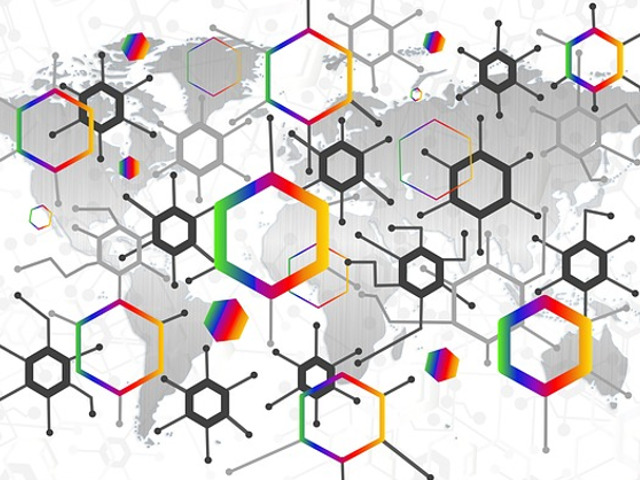
Individuals and organizations have found means to strategize ways in which they can take advantage of certain political occurrences. For instance, such factors as elections or policy changes made by the government can lead to volatility in the market, which is pertinent to investors.
This is also the same reason why AI-powered trading is so effective, as it can rapidly analyze the data and the market, which opportunity pursues.
With that being said, political dynamics are a moving factor in the economy; being able to understand how major changes are made and when is crucial in deciding the importance or impact of the change.
Here are a few events that can aid AI in its trading.
1. Election Results
Every economy has particular indicators that signal the well-being of a country, such as currency value, the stock market, price of commodities, etc.
Bearing that in mind, elections can greatly alter and disrupt these specific indicators.
AI trading algorithms can easily circumvent these disruptions by predicting which candidate is likely to win the election, allowing them to predict how the market will change.
2. Government Policy Announcements
As we have mentioned above, elections lead to the change in policies. Some policies may even be made regarding trade, imports, or even taxes that can significantly alter the economy.
For instance, taking away a tax policy may significantly result in an increase in stock prices, whereas increasing the possible number of regulations only takes away from that.
AI understands these strategies and is easily able to calculate how long changes will need to be made based on policy descriptions.
3. Trade Agreements or Disputes
The signing of new trade agreements or the escalation of trade disputes has the capacity of affecting global markets as a whole. Diffusion tools for AI are able to identify changes and even dynamically alter trading strategies using the new sentiment.
This makes it possible for brokers and traders to take advantage of sudden price shifts within a market or economy’s industry or’s currencies.
4. Central Bank Policies
Central banks, such as the Federal Reserve, regularly announce decisions regarding interest rates, such as an increase or decrease in their rates.
AI systems are designed to observe these events and try to measure their effects on the price of various classes of assets.
These systems even anticipate the market reactions to these kinds of announcements and purchase nearly at the time market prices do shift.
ALSO READ: The Relationship between Finance, Politics, and Crypto Exchanges
5. Political Scandals
Political scandals create uncertainty in markets and economies intimately with top government members or large companies, which command significant attention.
A myriad of AI trading platforms were designed to scan markets for volatility reasons and rule changes that such events introduce, centered on an eras management approach, TeenWage.
6. Legislative Changes
Some of the new laws today target the repeal of over-the-counter derivatives dealers and targeted marketing. It is evident that these laws will have a profound impact on the stock market.
Algorithms leverage artificial intelligence to assist traders in quickly evaluating the ramification of such changes, enabling the biased positions to be covered and the investment process to be executed.
7. Geopolitical Tensions
In times of sociopolitical conflict or friction, geopolitical tensions abound, which invariably creates uncertainty in the global market.
These systems can facilitate early stage detection of disruptive market events, enabling traders to minimize losses by entering or exiting positions rapidly.
8. Budget Announcements
Moreover, annual and/or short-term emergency budget announcements secure their place in the list of economic events that will affect trading opportunities.
Sectors that are likely to benefit or be losers from shifts in government spending priorities are subjected to analysis by AI resources, which enables traders to rebalance their portfolios in readiness for such events.
Conclusion
Political events are one of the greatest sources of speculation in the market, with traders that are good at predicting these events getting the most gain out of such volatility.
With regards to such a sudden event or series of events occurring, AI-enabled trading systems provide an advantage in the sense that they are able to manage a large number of pieces of information timely, enabling the traders to move during news around events concerning politics.
It is this risk appetite, in addition to advanced AI systems, that allows traders to benefit from such unpredictable aspects of financial markets.




 Governance has always been at the core of societal development. From ancient city-states to modern-day democracies, governance systems have evolved to reflect the needs of their citizens. Today, a similar evolution is happening in the digital world, with decentralized protocols offering a new approach to governance. These protocols, particularly in the realm of decentralized finance (DeFi), demonstrate how communities can manage themselves without relying on central authorities. One example of this is Aave, a DeFi platform where users govern through a decentralized structure.
Governance has always been at the core of societal development. From ancient city-states to modern-day democracies, governance systems have evolved to reflect the needs of their citizens. Today, a similar evolution is happening in the digital world, with decentralized protocols offering a new approach to governance. These protocols, particularly in the realm of decentralized finance (DeFi), demonstrate how communities can manage themselves without relying on central authorities. One example of this is Aave, a DeFi platform where users govern through a decentralized structure. Kamala Harris’ campaign team reported that as of the end July, 2024, “the Brat” raised as much as $310 million to date since Harris entered the US presidential race as a presumptive nominee. On day one of being nominated by Pres. Joe Biden after the latter formally withdrew his candidacy, VP Kamala Harris has garnered record-breaking figures in campaign donations. The overwhelming reactions came from big and small donors, including some who admitted that they are registered Republican voters.
Kamala Harris’ campaign team reported that as of the end July, 2024, “the Brat” raised as much as $310 million to date since Harris entered the US presidential race as a presumptive nominee. On day one of being nominated by Pres. Joe Biden after the latter formally withdrew his candidacy, VP Kamala Harris has garnered record-breaking figures in campaign donations. The overwhelming reactions came from big and small donors, including some who admitted that they are registered Republican voters. A “brat” by Charli XCX’s definition is someone who is quite honest, to the point of being blunt and could be a little volatile as she is an individual inclined to embrace the messiness of life.
A “brat” by Charli XCX’s definition is someone who is quite honest, to the point of being blunt and could be a little volatile as she is an individual inclined to embrace the messiness of life.
